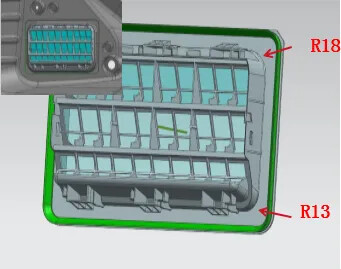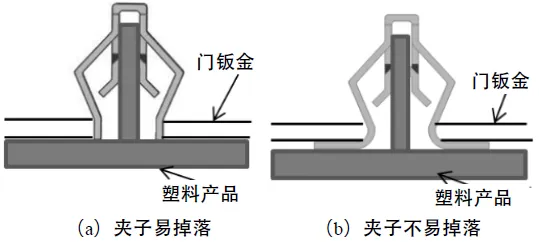Error prevention methods can be categorized into four aspects: design for error prevention, tooling for error prevention, process error prevention, and human error prevention. Among these, design for error prevention is the primary and most robust approach. During structural design, design engineers often consider how to avoid incorrect assembly or reverse assembly.
Design for Error Prevention refers to using technology or tools during the product design process to ensure that an ideal result or product that meets design objectives is always achieved. It aims to minimize errors caused by human or machine issues during manufacturing, assembly, or usage. Errors due to design mistakes can lead to products lacking essential functions or having unreasonable parameters, resulting in inherent defects and potentially serious consequences. For instance, a design error in a car’s brake fluid line could lead to traffic accidents, while poor insulation design in a washing machine could result in electrical leakage. Even design mistakes that don’t count as outright errors can create significant difficulties in manufacturing and usage, such as difficulties in processing, confusion, and maintenance challenges, all of which increase the risk of errors in production and use.
1. Error Prevention in Assembly
During the assembly of products, similar components are prone to being installed incorrectly. Thus, it’s advisable to merge similar components. Merging similar components not only saves costs related to molds, fixtures, and inventory but also prevents the assembly of overly similar parts in the wrong locations.
For example, in the design of a windshield washer system, the front and rear washer motors were difficult to distinguish by appearance and color. To solve this issue, color coding and structural error prevention measures were implemented. Eventually, a new model was introduced that combined the connectors for both motors into one, allowing for the installation of only one motor. This change led to a reduction in the defective installation rate from 10% to 0% and improved assembly efficiency by 30 seconds.
2. Prevention of Reverse Assembly
Many times, a component with a regular shape, such as square or circular parts, may not be easily distinguishable at a glance when assembled onto another component, which can lead to incorrect assembly. For instance, the design of a certain vehicle’s vent component exhibited similar top and bottom shapes, which often resulted in reverse assembly during actual assembly. To address this, the design engineer modified the radius dimensions at the arrowed areas, preventing the part from being inserted incorrectly into the metal casing. This change reduced the defective installation rate from 10% to 0%, and subsequent models adopted this error prevention feature with excellent results.
In cases like this, structural engineers should strive to incorporate clear error prevention design features. Non-symmetric ribs, holes, grooves, and protrusions are common features that help prevent errors. The more pronounced these features are, the better they serve their purpose.
3. Prevention of Missing Steps
When designing error prevention structures for a component, one must consider not only the manufacturability and operational feasibility of the component itself but also the error prevention needs of subsequent processes. This includes considering any error prevention requirements during transportation of the component. For example, a component undergoes several steps: injection molding, surface spraying, covering with fabric A, and then covering with fabric B. Fabric A is critical, and if its covering step is skipped without being recognized before applying fabric B, the consequences can be severe. Therefore, a reliable measure should be in place to ensure that once the covering of fabric A is complete, a noticeable structural change occurs—such as creating a hole or removing a feature—before proceeding to cover with fabric B. Mechanical recognition methods can then ensure that the covering of fabric A has indeed been completed before starting the next step.
4. Prevention of Dropping Components
After installing a metal clip on a plastic component that must be secured to a door panel, frequent disassembly for maintenance can lead to detachment of the metal clip from the plastic. If the metal clip is poorly designed, it may fall into the door panel and become difficult to retrieve. The following illustration shows the difference between a metal clip that is prone to falling and one that is securely designed.
How to Prevent Design Errors
Quality management system standards provide clear guidance on quality control for design and development. Appropriate quality tools should be employed during the design phase to thoroughly identify market and customer requirements, avoiding errors and improving design quality. These tools include Quality Function Deployment (QFD), System Failure Mode and Effects Analysis (SFMEA), Design of Experiments (DOE), Design Failure Mode and Effects Analysis (DFMEA), Process Failure Mode and Effects Analysis (PFMEA), Reliability Analysis (RA), and Fault Tree Analysis (FTA). The fundamental assumption is that product design determines the production process. This design can be executed or improved to eliminate the likelihood of errors occurring during production.


